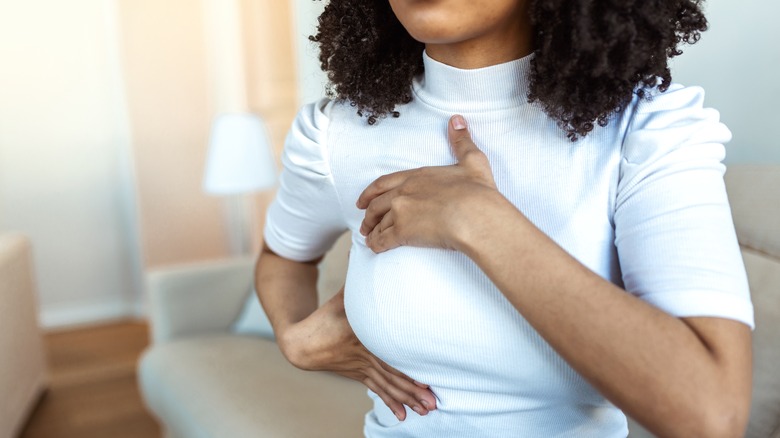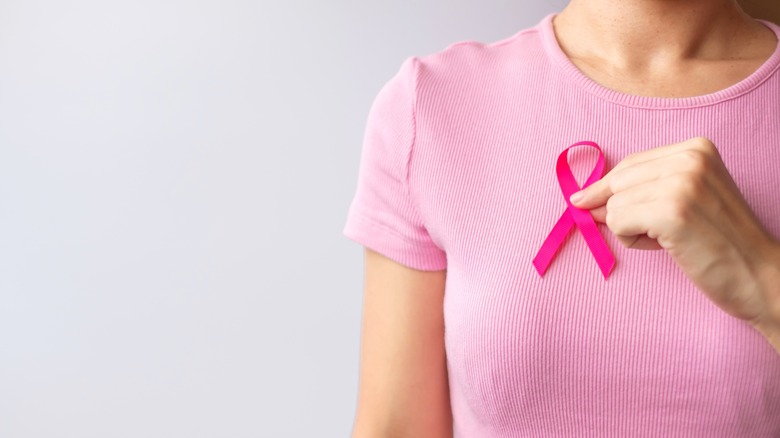Survey Finds That Women Are Missing The Signs Of A Rare And Dangerous Breast Cancer
Most women know that finding a lump in the breast is one of the earliest ways to detect breast cancer. That's why women are encouraged to do monthly self-breast exams to detect any lumps or changes in their breasts. Not only will regular self-exams help identify issues that seem concerning, but it helps women get to know their own breasts and how they feel, so they can detect if any changes suddenly occur (via BreastCancer.org).
The American Cancer Society says when you find changes or abnormalities in your breast, it's best to reach out to your medical provider right away to get an exam and discuss your findings. Early diagnosis offers the best chance for treatment and survival of breast cancer.
However, it's important to understand that lumps aren't the only signs of breast cancer, and overlooking other key symptoms can be deadly. Signs such as redness, skin tightening, inverted or flattened nipples, feeling heavy, or the skin having a similar texture to an orange peel can be signs of inflammatory breast cancer, which is one of the most aggressive forms (via the Mayo Clinic).
These signs may signal an aggressive form of breast cancer
While most women know to look for lumps, many have no idea that reddening, bruising, or inverted nipples can be signs of breast cancer, according to a study done by Ohio State, which surveyed 1,100 U.S. women ages 18 and older. It found that 78% of respondents knew that a lump could be a sign of breast cancer, yet just 44% considered redness, thickening, or pitting of the skin as a breast cancer symptom (via HealthDay).
"Women should know that radical changes to the breast are not normal, and breast self-exams are still very important. Some 50% of inflammatory breast cancers are diagnosed as stage 4 disease," says Dr. Ko Un Park (via U.S. News).
Inflammatory breast cancer is rare but it is also deadly. The five-year survival rate for people with inflammatory breast cancer is 41% (via Cancer.net). Dr. Park advises speedy follow-up after identifying a worrisome sign, saying, "It is important for women to recognize changes in both the appearance and feel of their breasts so that changes can be discussed quickly with a physician."

